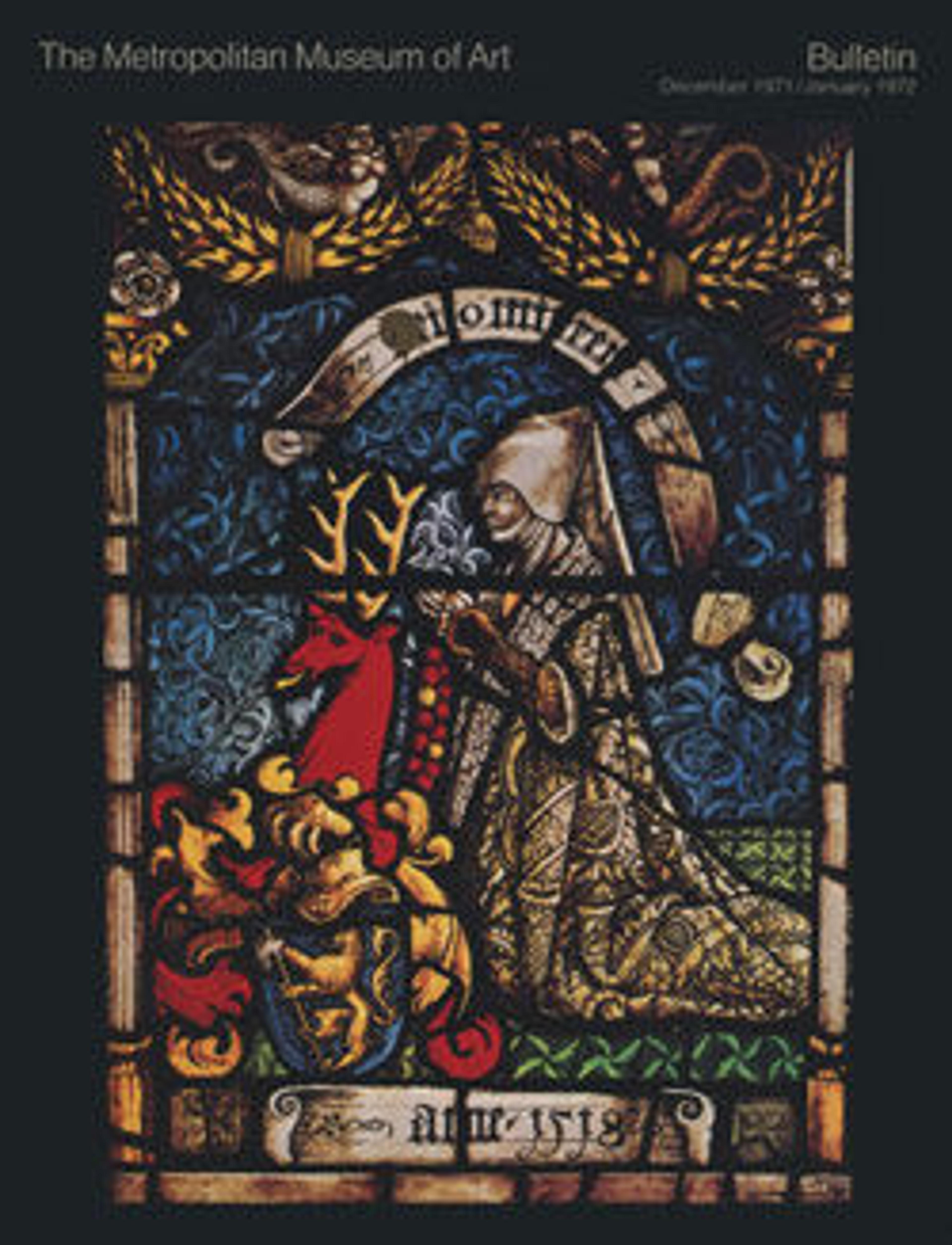Saint Mary Magdalene
Represented at the left is the prophet Isaiah (YSAIAS) holding a scroll inscribed: ECCE VIRGO—the first words of his prophecy, “Behold, a virgin shall conceive, and bear a son” (Isaiah 7:14). At the right is Saint Mary Magdalene holding her attribute, the alabaster jar containing the ointment with which she anointed the body of Jesus. The inscription reads: M[ARIA SOROR] MARTH[HA]E (Mary, sister of Martha). Grisaille windows with figural glass in the central zones, known as band windows, were common in French glazing programs of the fourteenth century. Here, the grisaille panels are unrelated to the figures, and whether they were ever in such a window is unknown.
Artwork Details
- Title:Saint Mary Magdalene
- Date:ca. 1325
- Geography:Made in Loire Valley, France
- Culture:French
- Medium:Pot-metal, colorless glass, and vitreous paint
- Dimensions:Overall: 135 1/2 x 18 in. (344.2 x 45.7 cm)
- Classification:Glass-Stained
- Credit Line:The Cloisters Collection, 1928
- Object Number:28.107.2
- Curatorial Department: Medieval Art and The Cloisters
More Artwork
Research Resources
The Met provides unparalleled resources for research and welcomes an international community of students and scholars. The Met's Open Access API is where creators and researchers can connect to the The Met collection. Open Access data and public domain images are available for unrestricted commercial and noncommercial use without permission or fee.
To request images under copyright and other restrictions, please use this Image Request form.
Feedback
We continue to research and examine historical and cultural context for objects in The Met collection. If you have comments or questions about this object record, please contact us using the form below. The Museum looks forward to receiving your comments.
